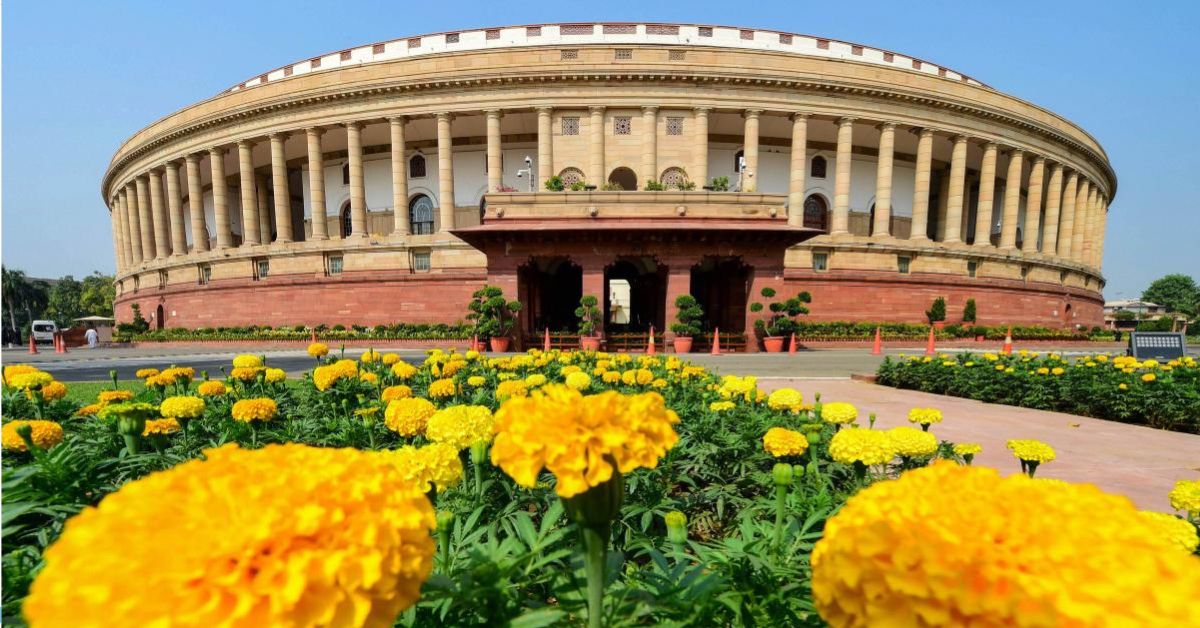Parliament House, or Sansad Bhavan, is a grand building in the heart of New Delhi that symbolizes India’s democracy. It’s where India’s laws are made and important decisions are taken. Built by a famous British architect named Sir Edwin Lutyens, it’s a beautiful mix of old and Indian styles.
The building looks like something from ancient Rome, with a big round shape and fancy carvings. Inside, it’s big and impressive, showing how serious the work of government is. Visiting Parliament House is a great way to learn about India’s government and see a piece of its history. Whether you love architecture, history, or just want to know more about India, this place is worth a visit.
How to reach:
Public Transport
- Metro: The closest metro station is Central Secretariat on the Yellow and Violet Lines.
- Bus: Several DTC buses stop near Parliament House, including routes 24, 25, and 26. Check for nearby bus stops.
- Auto-rickshaw: Easily available, confirm the fare before starting your journey.
Private Transport
- Taxi or Cab: Use ride-hailing apps like Uber or Ola, or hire a local taxi.
- Car: Use GPS for directions and be aware of parking restrictions.
- Bicycle or Scooter: Rent a bicycle or scooter and follow traffic rules.
Other Options
- Walking: If you’re nearby, walking is a good option.
- Guided Tours: Many guided tours include Parliament House. Check tour packages for transportation details.
- From the Airport: Take a taxi, cab, or metro from Indira Gandhi International Airport to Central Secretariat.
Best time to visit:
Winter (October to March)
Winter is the most pleasant time to visit Delhi, including Parliament House. The weather is cool and comfortable, perfect for sightseeing. While it’s peak tourist season, you’ll have plenty of options for tours and activities.
Summer (April to June)
Delhi’s summers are extremely hot and dry. While it might be less crowded, the intense heat can make outdoor activities uncomfortable. If you do visit during this time, plan your outings for early morning or late evening.
Monsoon (July to September)
The monsoon season brings heavy rain and humidity to Delhi. Although it cools down, the unpredictable weather can disrupt plans. You’ll find fewer crowds but be prepared for rain and potential traffic congestion.
Attractions:
Main Building:
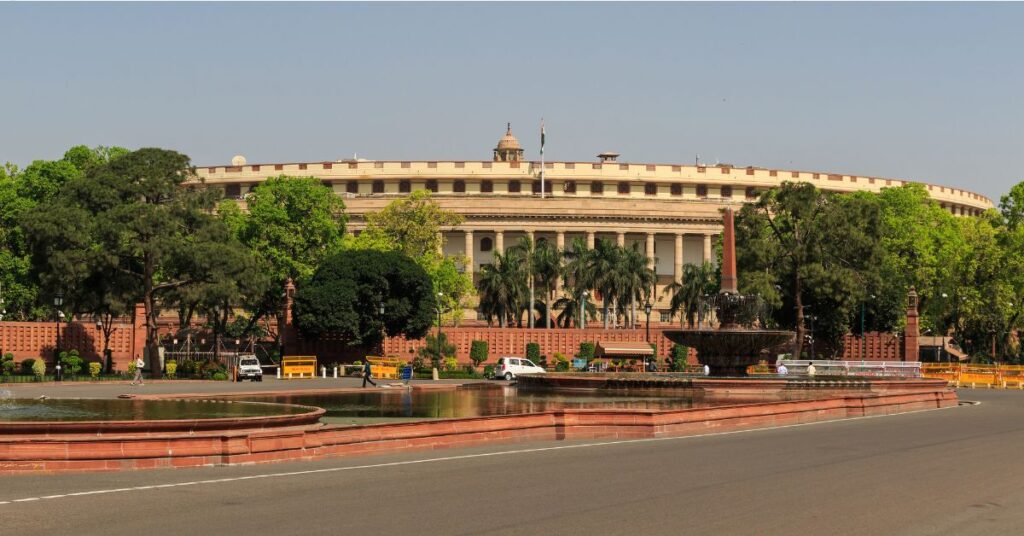
Parliament House is a stunning building that represents India’s democracy. It looks like a big circle, inspired by old Roman buildings, and is decorated with beautiful Indian designs. The architect was a famous person named Sir Edwin Lutyens.
Inside, there are special rooms where India’s laws are made. The building is designed to be open and fair, just like a democracy should be. It’s a very important place for India and shows how proud the country is of its government.
Mughal Gardens:
Hidden within the busy Parliament House is a beautiful garden called the Mughal Gardens. It’s like a secret escape from the city. The garden looks like something from old India, with lots of green plants and flowers arranged in a perfect pattern.
Every year, around February and March, the garden is full of colorful flowers. There are also pretty water channels and walking paths. It’s a peaceful place to relax and enjoy the beauty of nature, right in the middle of a busy city.
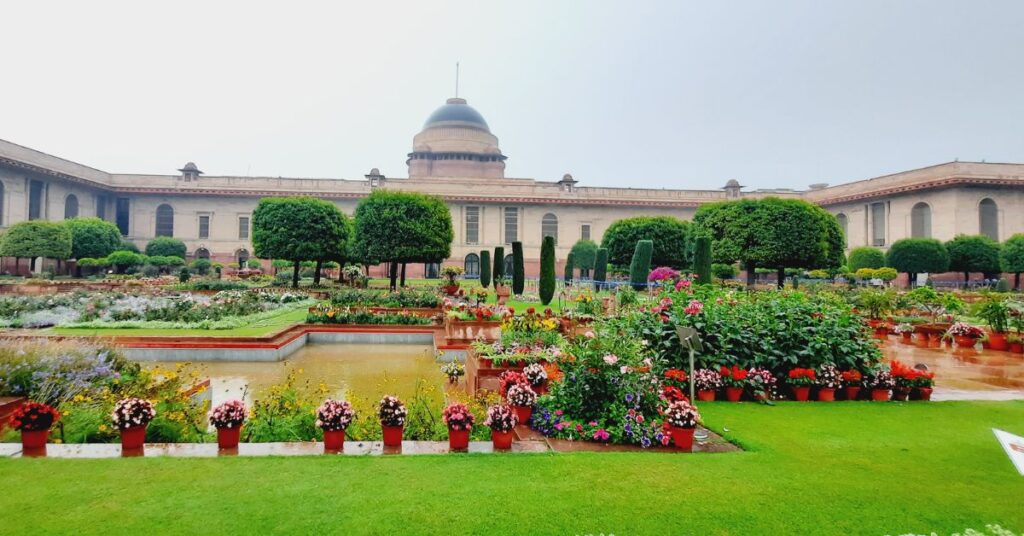
Central Hall:
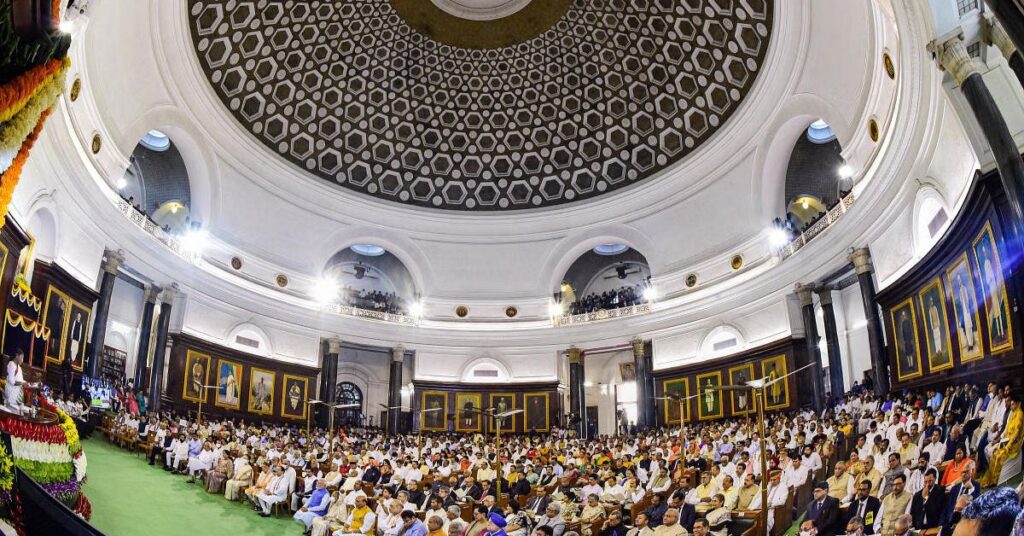
The Central Hall is the biggest and most important part of Parliament House. It’s a very grand room with a huge dome. Many important things have happened here, like speeches by India’s presidents. The hall is beautifully decorated with lots of fancy wood and big pillars. It’s shaped like a circle and is very impressive. This special place shows how important India’s government is and all the big things that have happened there.
Parliament Museum:
The Parliament Museum is a place where you can learn all about how India’s government works. It’s full of interesting things like old papers, photos, and even interactive displays that show you how laws are made. You can see how India’s government has changed over time and why it’s important. It’s a great place to visit if you want to understand India better.
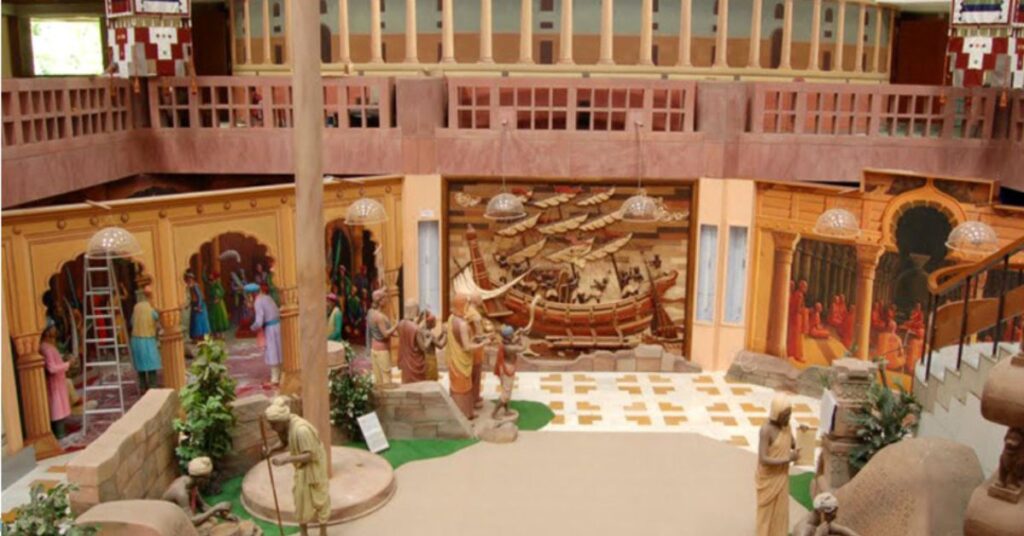
Local Experiences:
- India Gate: A war memorial offering a serene escape.
- Rashtrapati Bhavan: The President’s residence with guided tours and stunning gardens.
- Connaught Place: A vibrant shopping and dining hub with colonial architecture.
- Rajpath: A grand avenue for leisurely walks or witnessing grand events.
- Nehru Park: A green oasis perfect for relaxation and picnics.
- National Museum: Discover India’s rich history through artifacts and artworks.
- Savor Delhi’s street food: Indulge in local delicacies.
- Delhi Haat: Experience India’s diverse culture through crafts and cuisine.
- Immerse in arts and culture: Enjoy performances at India Habitat Centre or Kamani Auditorium.
- Explore Indian crafts: Visit the Crafts Museum for traditional artistry.
- Discover local life: Stroll through Parliament Street.
Travel tips:
- Book Ahead: Reserve your tour or session in advance.
- Bring Identification: Carry a valid ID for security checks.
- Prepare for Security: Expect thorough security screening. Avoid prohibited items.
- Dress Appropriately: Maintain a formal attire.
- Check Photography Rules: Adhere to photography restrictions.
- Plan Your Visit: Check visiting hours and session schedules.
- Consider the Weather: Dress accordingly for the season.
- Choose Your Transportation: Opt for public transport or reliable taxis.
- Follow Guidelines: Adhere to security protocols and staff instructions.
- Explore the Area: Familiarize yourself with nearby amenities.
- Manage Your Time: Arrive early to make the most of your visit.
- Prioritize Health and Safety: Stay hydrated and maintain good hygiene.
Conclusion
A visit to Parliament House on Xplro.com offers an immersive journey into India’s democratic heart and architectural brilliance. Explore the iconic building designed by Sir Edwin Lutyens, witness the historic legislative chambers, and find tranquility in the Mughal Gardens. Delve into India’s political history through the Central Hall’s grandeur and the Parliament Museum’s informative exhibits. Extend your exploration to nearby landmarks like India Gate and Connaught Place, or immerse yourself in local culture through performances and events. Optimize your visit by planning ahead, adhering to guidelines, and embracing the blend of history and modernity. Parliament House stands as a testament to India’s rich heritage, offering visitors a profound understanding of the nation’s democratic journey.
FAQs
1. What is the Parliament House in Delhi?
- The Parliament House, officially known as Sansad Bhavan, serves as the meeting place for India’s Parliament. It contains the Lok Sabha (House of the People) and the Rajya Sabha (Council of States) and is a notable example of Sir Edwin Lutyens’ architectural design.
2. How can I arrange a tour of the Parliament House?
- Tours of the Parliament House can be arranged by visiting the official website or contacting the Parliament Visitor’s Center. It is advisable to book in advance, particularly for guided tours or during active parliamentary sessions.
3. What are the official visiting hours for Parliament House?
- Visiting hours vary and should be confirmed through the Parliament House’s official website. Generally, tours are conducted on weekdays during regular business hours, with some exceptions for national holidays.
4. What identification is needed to enter Parliament House?
- Visitors are required to present valid identification, such as a passport, driver’s license, or Aadhar card, for security verification and entry into the building.
5. Is it permissible to take photographs inside Parliament House?
- Photography is typically not allowed inside Parliament House. Adhere to the guidelines set by security personnel and seek permission if you wish to take photos.
6. What should I wear when visiting Parliament House?
- A formal and modest dress code is recommended. Avoid casual clothing such as shorts and flip-flops. Professional attire is appropriate for the visit.
7. Are there security procedures for entering Parliament House?
- Yes, visitors will undergo security screening. To expedite the process, avoid bringing large bags, sharp objects, or items restricted by security.
8. Can I visit Parliament House when Parliament is in session?
- Yes, but advance booking is essential, and there may be specific visitor restrictions during sessions. Check the schedule and any special protocols in advance.
9. What attractions are close to Parliament House?
- Nearby attractions include India Gate, Rashtrapati Bhavan, Connaught Place, and Nehru Park. These spots provide additional historical and cultural experiences.
10. How can I reach Parliament House by public transport?
- The nearest metro station is Central Secretariat. From there, you can either walk or use local transportation to get to Parliament House. Several DTC buses also service the area.
11. Are there places to eat near Parliament House?
- Connaught Place, located nearby, offers a variety of dining options from casual eateries to fine dining establishments. It’s a good area to find meals and refreshments.
12. Who should I contact if I need help during my visit?
- For assistance, you can approach security staff or visit the information desk within the Parliament House complex. They can provide directions, information, and help with any queries.




